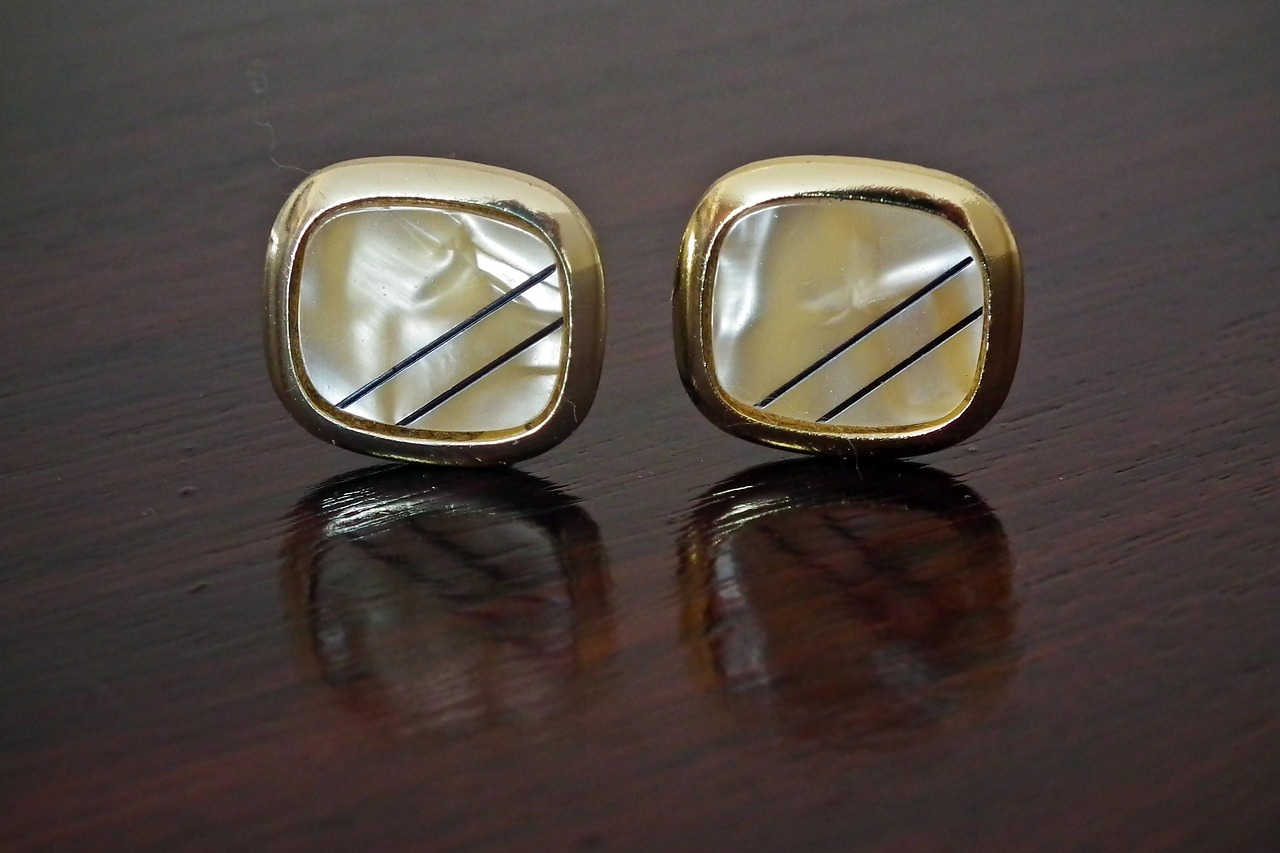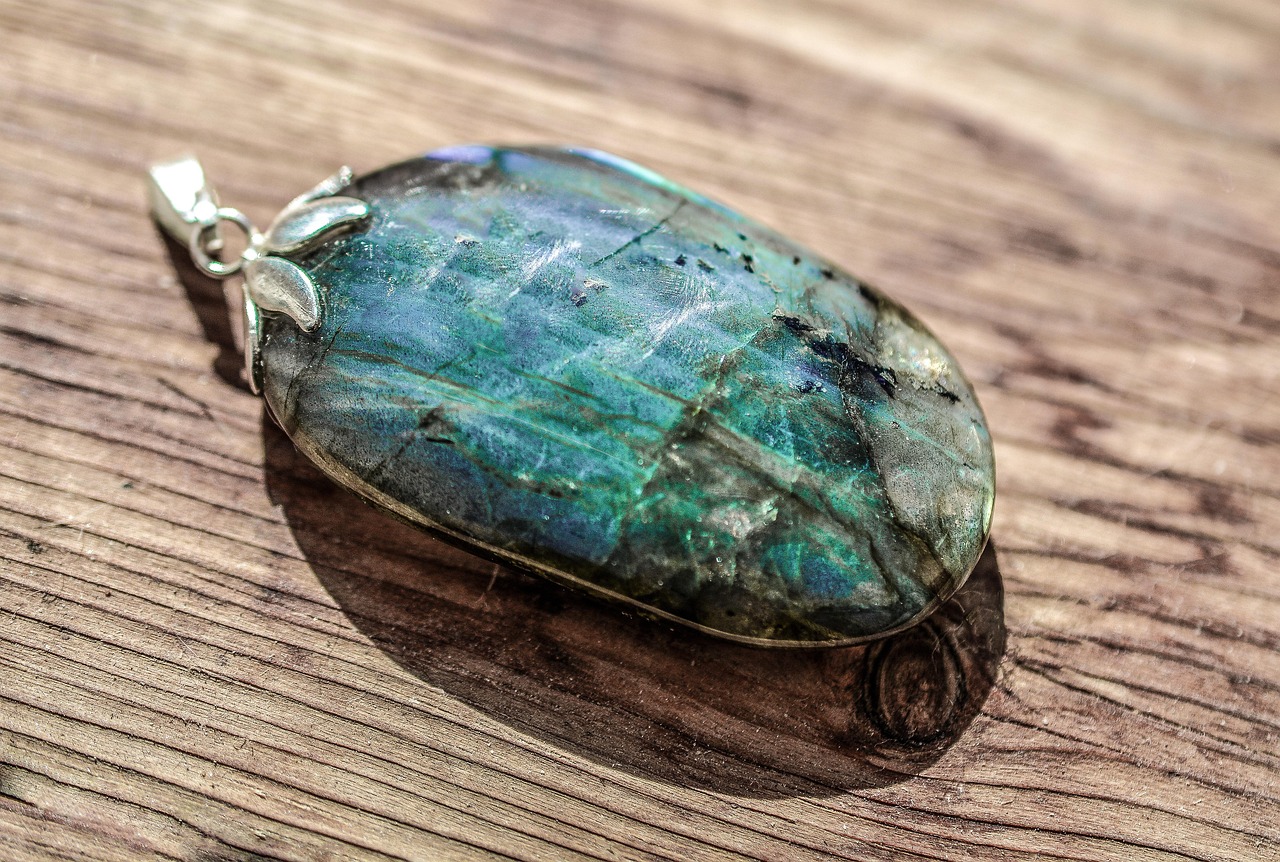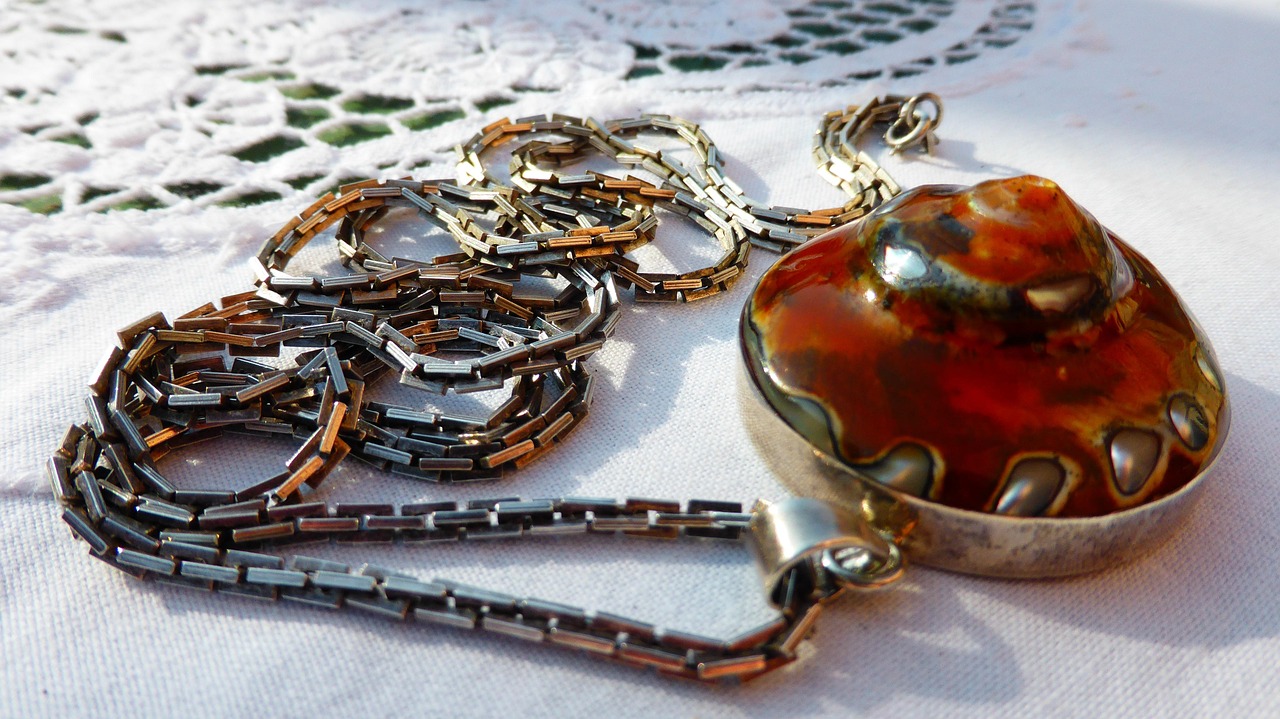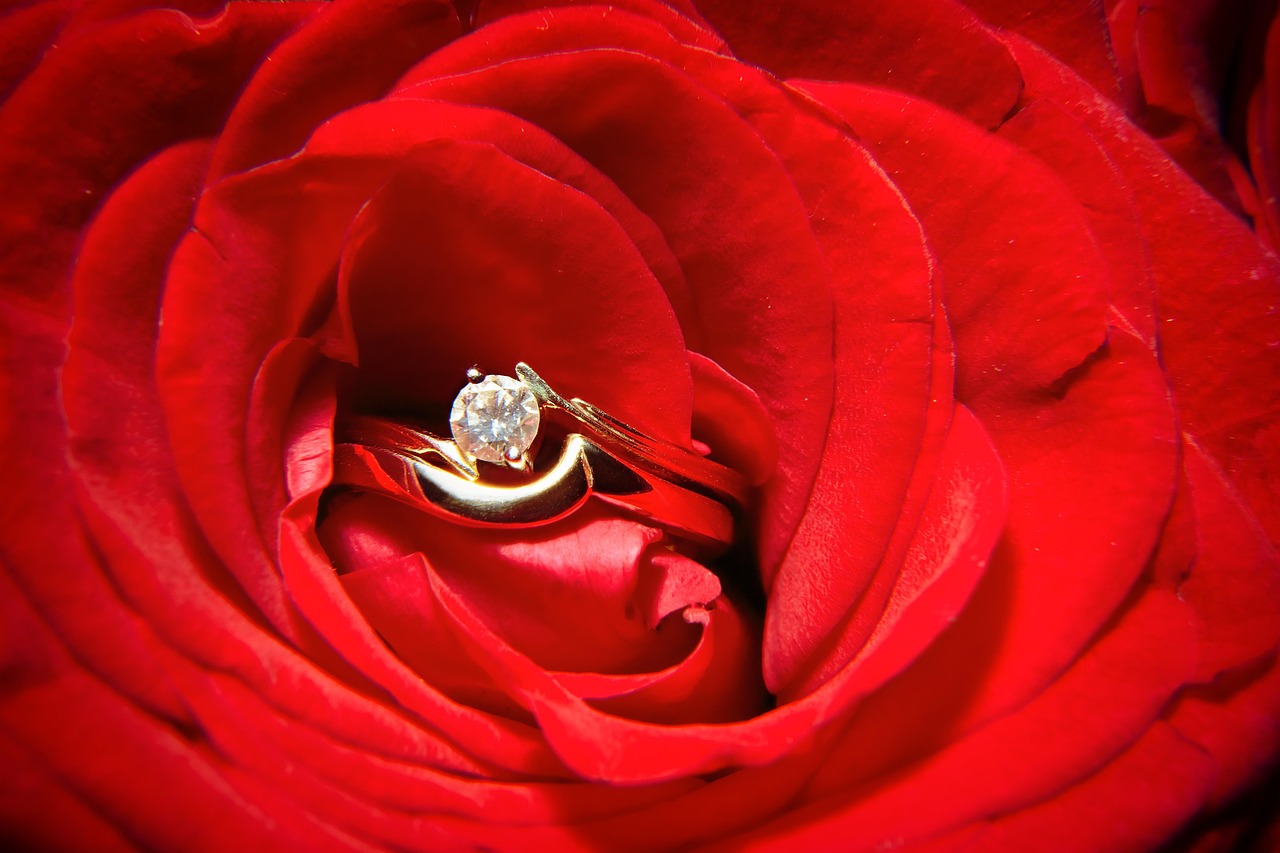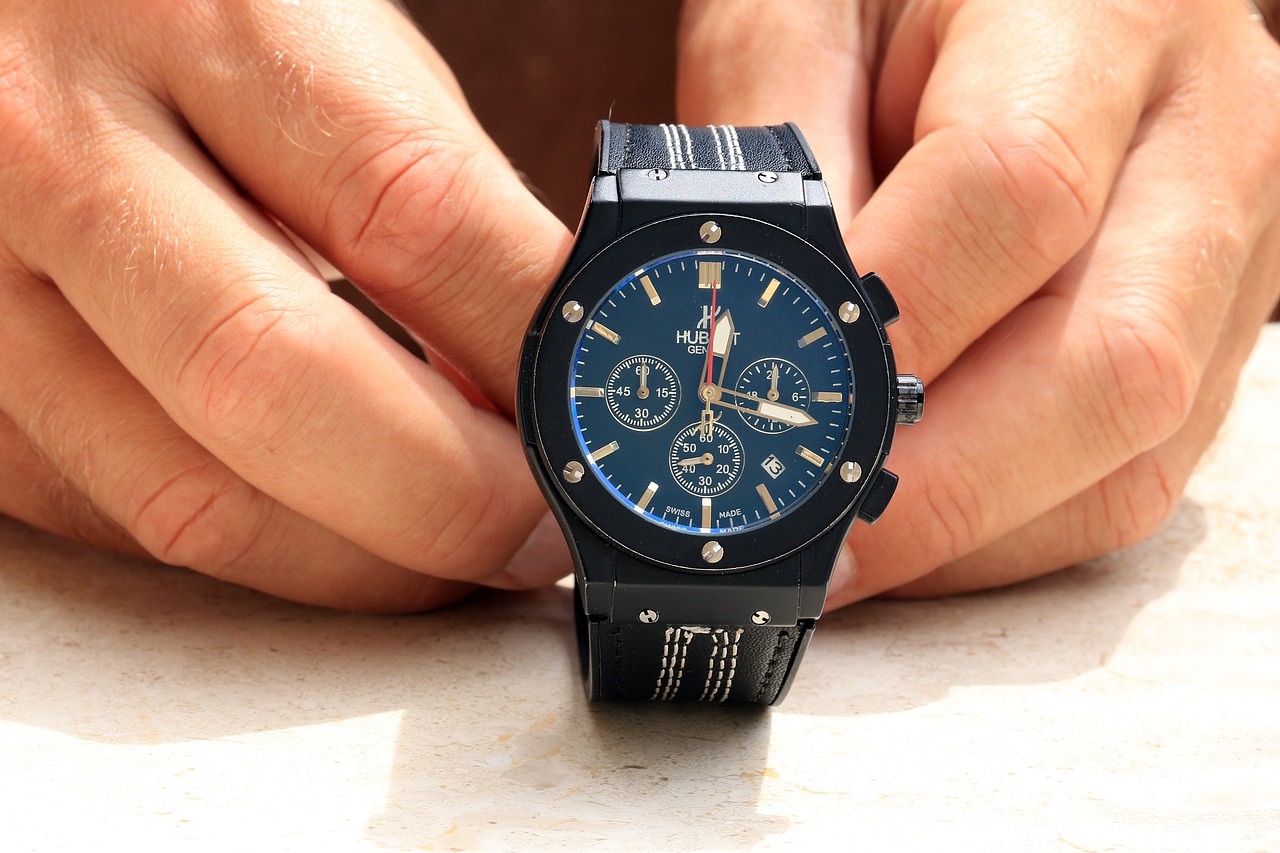This article delves into the complexities of investing in jewelry, evaluating both the advantages and disadvantages to assist you in making an informed decision about its viability as an investment option.
Jewelry stands out as a unique investment due to its intrinsic value, which often arises from the craftsmanship and quality of materials used. Understanding these factors is essential for potential investors to appreciate its distinctive position in the market.
Investing in jewelry presents several notable advantages:
- Aesthetic Appeal: Jewelry is not only a financial asset but also a source of beauty and personal satisfaction.
- Portability: Unlike real estate, jewelry is easy to transport and store, making it a discreet investment option.
- Value Appreciation: Certain pieces, especially those with historical significance or rare gemstones, can appreciate significantly over time.
Jewelry often holds sentimental value, transforming it from a mere investment into a cherished possession. This emotional connection can enhance its overall worth.
Jewelry can be easily moved and stored, offering a level of discretion that larger investments, such as real estate, cannot provide.
Investors may find that certain jewelry pieces can appreciate significantly, particularly those featuring rare gemstones or possessing historical significance, making them attractive options for investment.
Despite its benefits, investing in jewelry also comes with inherent risks:
- Market Volatility: The jewelry market can be unpredictable, with prices fluctuating based on trends and economic conditions.
- High Transaction Costs: Buying and selling jewelry often incurs significant fees, including appraisals and commissions, which can diminish overall profitability.
- Lack of Liquidity: Unlike stocks, selling jewelry can take time, making it less liquid and potentially inconvenient for investors needing quick access to cash.
Selecting the right pieces for investment requires careful consideration:
- Understanding Gemstone Quality: Familiarizing yourself with the Four Cs—cut, color, clarity, and carat weight—can help evaluate the quality and potential value of gemstones.
- Researching Designer and Vintage Pieces: Investing in renowned designers or vintage collections can enhance value due to their historical significance and collector demand.
Finding reputable sources is crucial for ensuring authenticity and value retention:
- Reputable Jewelers and Auction Houses: Purchasing from established jewelers and auction houses provides assurance of quality and authenticity.
- Online Marketplaces and Platforms: While convenient, it’s essential to verify seller credibility and product authenticity to avoid potential scams.
Proper maintenance and insurance are vital for preserving the value of your jewelry:
- Regular Cleaning and Maintenance: Routine cleaning and professional maintenance keep your jewelry in optimal condition, preserving its aesthetic and market value.
- Importance of Insurance: Insuring your jewelry safeguards against theft or damage, ensuring you can recover financial losses in unfortunate circumstances.

What Makes Jewelry a Unique Investment?
Investing in jewelry is not merely about purchasing beautiful pieces; it’s an intricate process that involves understanding the craftsmanship and materials that contribute to a piece’s intrinsic value. This knowledge is crucial for potential investors who wish to navigate the jewelry market effectively.
Jewelry’s uniqueness as an investment stems from several factors. First and foremost, the craftsmanship involved in creating jewelry can significantly enhance its value. Skilled artisans spend years honing their craft, and their expertise often reflects in the quality of the final product. Each piece can tell a story, showcasing the artist’s vision and the techniques used, which can make it highly sought after by collectors.
Moreover, the materials used in jewelry—such as precious metals and gemstones—play a pivotal role in determining its worth. For instance, gold and platinum have intrinsic value due to their rarity and demand in various industries. Similarly, gemstones like diamonds, rubies, and emeralds are valued not only for their beauty but also for their rarity and quality. Understanding the grading systems for these materials is essential for investors looking to make informed decisions.
Another aspect that makes jewelry a unique investment is its emotional and aesthetic appeal. Unlike stocks or bonds, jewelry can evoke personal connections and memories, adding an intangible value that can be difficult to quantify. This emotional aspect can make jewelry a more fulfilling investment for some individuals, as it combines financial potential with personal enjoyment.
Furthermore, jewelry often serves as a portable asset. Unlike real estate, which requires significant effort to manage and maintain, jewelry can be easily transported and stored. This portability allows investors to hold their assets discreetly, making it a practical option for those who prefer to keep their investments private.
However, potential investors should also be aware of the market dynamics that influence jewelry prices. The jewelry market can be volatile, with prices fluctuating based on trends, economic conditions, and consumer demand. As a result, it is crucial for investors to stay informed about market trends and be prepared for potential fluctuations in value.
In addition to market volatility, the transaction costs associated with buying and selling jewelry can be significant. Investors should consider appraisal fees, insurance costs, and commissions when calculating the overall profitability of their investments. These costs can eat into potential returns, making it essential for investors to factor them into their decision-making process.
Finally, the liquidity of jewelry investments can be a concern. Unlike stocks or bonds that can be quickly sold on the market, selling jewelry may take time and effort, particularly if the piece is unique or rare. This lack of liquidity can pose challenges for investors who may need quick access to cash.
In summary, understanding the craftsmanship and materials that contribute to jewelry’s intrinsic value is vital for potential investors. By recognizing the unique aspects of jewelry as an investment, individuals can make informed decisions that align with their financial goals and personal preferences.
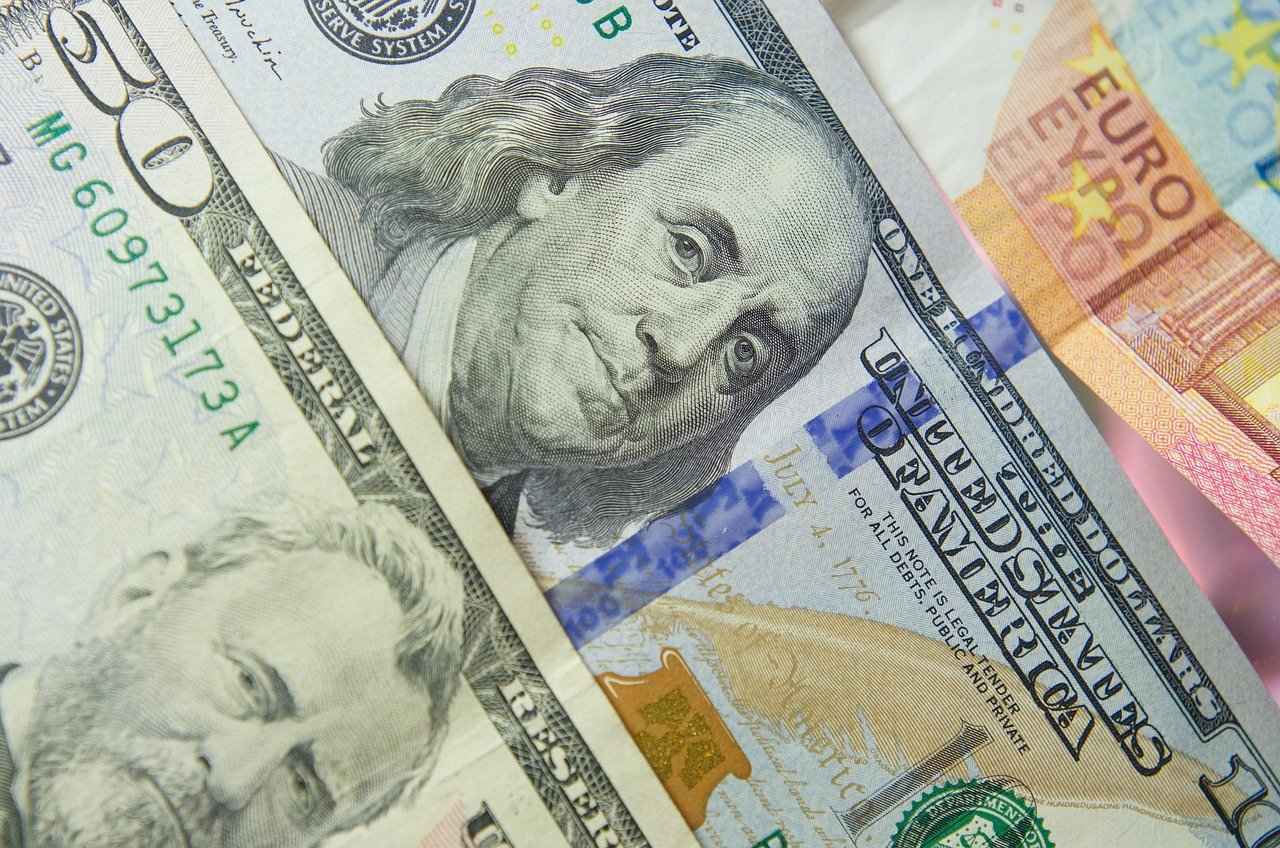
Pros of Investing in Jewelry
Investing in jewelry has gained popularity as a viable alternative to traditional assets. In this section, we will delve into the , highlighting its unique benefits that appeal to both collectors and investors alike.
Jewelry investment offers an array of advantages that can enhance both personal satisfaction and financial returns. Here are some compelling reasons to consider:
- Aesthetic Appeal: One of the most significant benefits of investing in jewelry is its beauty. Unlike stocks or bonds, jewelry serves a dual purpose as both an investment and a form of art. Owning exquisite pieces can bring joy and serve as a statement of personal style.
- Portability: Jewelry is inherently portable, allowing investors to easily transport their assets. This convenience makes it a discreet investment option, particularly in contrast to larger assets like real estate, which require more effort and resources to manage.
- Potential for Value Appreciation: Certain jewelry pieces can appreciate significantly over time, especially those made with rare gemstones or crafted by renowned designers. Historical significance can also play a role in value increase, making jewelry a potentially lucrative investment.
Jewelry often carries deep emotional and sentimental value, which can enhance its overall worth. Many people invest in pieces that have personal significance, making them more than just financial assets. This emotional connection can lead to greater satisfaction and a sense of pride in ownership.
The jewelry market is influenced by trends and consumer demand, which can create opportunities for savvy investors. Keeping an eye on emerging trends can help investors make informed decisions about which pieces to buy. For instance, vintage and antique jewelry have seen a resurgence in popularity, driving up prices and making them attractive investments.
In some jurisdictions, investing in jewelry may offer tax advantages. Depending on local laws, capital gains from the sale of jewelry might be taxed at a lower rate than other investments, providing an additional incentive for investors to consider jewelry as part of their portfolio.
Jewelry can serve as a long-term investment that can be passed down through generations. High-quality pieces, especially those with historical significance, can retain or even increase their value over time, making them a wise choice for those looking to build wealth.
In summary, investing in jewelry presents numerous advantages, from its aesthetic appeal and portability to its potential for value appreciation and emotional significance. By understanding these benefits, investors can make informed decisions and explore the fascinating world of jewelry investment.
Emotional and Aesthetic Value
Jewelry is not merely a collection of precious stones and metals; it embodies a rich tapestry of that resonates with individuals on multiple levels. For many, pieces of jewelry signify cherished memories, milestones, and personal achievements, making them invaluable beyond their market price.
Jewelry often serves as a tangible reminder of special occasions such as weddings, anniversaries, or graduations. Each piece can tell a story, encapsulating moments that are deeply personal and irreplaceable. The emotional connection to jewelry can enhance its worth, as individuals are often willing to pay a premium for items that hold sentimental significance.
Beyond its emotional value, jewelry is also a form of art. The craftsmanship involved in creating exquisite pieces showcases the skill and creativity of artisans. The intricate designs, vibrant colors, and sparkling stones can evoke feelings of joy and admiration, making jewelry a source of personal satisfaction. This aesthetic appeal not only enhances the beauty of the piece but also contributes to its overall value in the eyes of the owner.
In many cultures, jewelry serves as a status symbol. High-quality pieces from renowned designers or those adorned with rare gemstones can signify wealth and sophistication. This social aspect can further elevate the perceived value of jewelry, as owning exclusive items can enhance one’s social standing. The allure of luxury and prestige associated with certain jewelry pieces makes them desirable not just for their beauty, but also for what they represent.
Investing in jewelry with emotional and aesthetic value can be a wise decision. Pieces that are well-crafted and hold personal significance often appreciate over time. For instance, vintage items or those with a unique story can become highly sought after in the market, leading to substantial returns on investment. Thus, the emotional attachment can translate into financial gain, making these pieces doubly valuable.
- Consider Personal Significance: Look for pieces that resonate with your life experiences or milestones.
- Focus on Craftsmanship: Invest in jewelry that showcases exceptional artistry and quality materials.
- Research Historical Context: Pieces with a rich history or unique story can hold greater emotional and financial value.
To maintain the emotional and aesthetic value of your jewelry, regular care is essential. Routine cleaning and professional maintenance can help preserve the beauty and integrity of the piece, ensuring it remains a cherished item for years to come. Additionally, documenting the story behind each piece can enhance its sentimental value, making it a treasured heirloom to pass down through generations.
In summary, jewelry transcends mere adornment; it embodies emotional connections and aesthetic appreciation. By understanding the profound significance of jewelry, individuals can make informed decisions about their investments, ensuring that they not only acquire beautiful pieces but also cherish the stories and memories they represent.
Portability and Discreetness
When considering investment options, many individuals seek assets that not only hold value but are also practical in terms of storage and transport. Jewelry stands out as a unique investment choice due to its inherent portability and discreet nature. Unlike real estate or larger assets, jewelry can be easily carried, making it an attractive option for investors who value flexibility.
Jewelry’s compact size allows it to be stored and transported with ease. Whether it’s a diamond ring, a gold necklace, or a collection of earrings, these items can be placed in a small pouch or box, making them simple to carry. This is particularly beneficial for investors who travel frequently or wish to keep their assets close at hand.
Investing in large assets like real estate often requires significant public disclosure, which can lead to unwanted attention or scrutiny. In contrast, jewelry can be kept private, allowing investors to maintain a low profile. This discretion can be advantageous for those who prefer to keep their financial matters personal.
- Easy Transport: Jewelry can be effortlessly carried in a purse or pocket, making it convenient for those on the move.
- Low Risk of Theft: When stored discreetly, jewelry can reduce the likelihood of theft compared to larger assets that may require extensive security measures.
- Flexible Investment: The ability to transport jewelry easily allows investors to take advantage of market opportunities wherever they arise.
The jewelry market can fluctuate based on trends and demand. Investors who can easily transport their jewelry are better positioned to take advantage of favorable market conditions. For instance, if a particular gemstone becomes highly sought after, having the ability to quickly sell or trade jewelry can lead to significant profits.
While jewelry is portable, proper storage is essential to maintain its value. Here are some tips:
- Use a Safe: Invest in a secure safe at home to store valuable pieces when not in use.
- Consider a Safety Deposit Box: For high-value items, a safety deposit box at a bank can provide an added layer of security.
- Keep Original Packaging: Storing jewelry in its original boxes can help protect it from damage and dust.
While there are numerous advantages to the portability of jewelry, it’s important to consider potential downsides:
- Risk of Loss: The more you transport jewelry, the higher the risk of losing it. Careful handling and storage are crucial.
- Insurance Needs: Portable jewelry may require additional insurance coverage, especially if frequently moved or worn.
In summary, jewelry’s portability and discreetness make it an appealing investment option for those looking for flexibility and privacy. These characteristics not only enhance the practicality of jewelry as an asset but also allow investors to navigate market fluctuations effectively. By understanding the benefits and potential risks associated with jewelry investment, individuals can make informed decisions that align with their financial goals.
Potential for Value Appreciation
When considering investment options, one might wonder about the in jewelry. This aspect not only makes jewelry an alluring investment but also a fascinating subject to explore. Investing in jewelry is not merely about acquiring beautiful pieces; it involves understanding market dynamics, historical significance, and the intrinsic value of materials.
The value of jewelry can appreciate significantly over time due to several factors:
- Historical Significance: Pieces that have a rich history or are associated with notable figures can see a dramatic increase in value. For example, jewelry worn by celebrities or royalty often becomes highly sought after.
- Rarity of Gemstones: Certain gemstones, particularly those that are rare, can appreciate more than others. Natural diamonds with unique colors or flawless clarity are examples of such gemstones.
- Craftsmanship and Design: High-quality craftsmanship and unique designs by renowned jewelers can make pieces more valuable. Artisanal techniques and limited editions are particularly appealing to collectors.
The jewelry market is influenced by various trends that can affect the appreciation of certain pieces:
- Fashion Trends: As styles change, so do the demands for specific types of jewelry. Staying informed about current trends can help investors make wise decisions.
- Economic Conditions: Economic stability often leads to increased consumer spending on luxury items, including jewelry. Conversely, during economic downturns, the market may experience fluctuations.
- Collector Demand: The interest of collectors can drive up prices for specific pieces, especially those that are rare or have unique features.
Before investing, it is essential to evaluate the potential for appreciation in jewelry:
- Research: Conduct thorough research on the piece, including its origin, materials, and market history. Understanding the background can provide insights into its future value.
- Professional Appraisals: Seeking appraisals from recognized experts can help determine the piece’s current value and its potential for future appreciation.
- Market Comparisons: Analyzing similar pieces in the market can offer a benchmark for expected appreciation. Look at auction results and sales data for comparable items.
While the potential for value appreciation is significant, there are challenges to consider:
- Market Volatility: The jewelry market can be unpredictable, with prices fluctuating based on various external factors, including economic changes and consumer preferences.
- High Transaction Costs: Buying and selling jewelry can involve considerable costs, such as appraisals, commissions, and insurance, which can eat into profits.
- Lack of Liquidity: Unlike stocks, jewelry may take time to sell, making it less liquid. Investors should be prepared for the possibility of holding onto their pieces for longer periods.
In summary, while jewelry can be a valuable investment opportunity with the potential for significant appreciation, it is crucial to approach it with knowledge and caution. By understanding the factors that contribute to value appreciation and being aware of market trends, investors can make informed decisions that align with their financial goals.
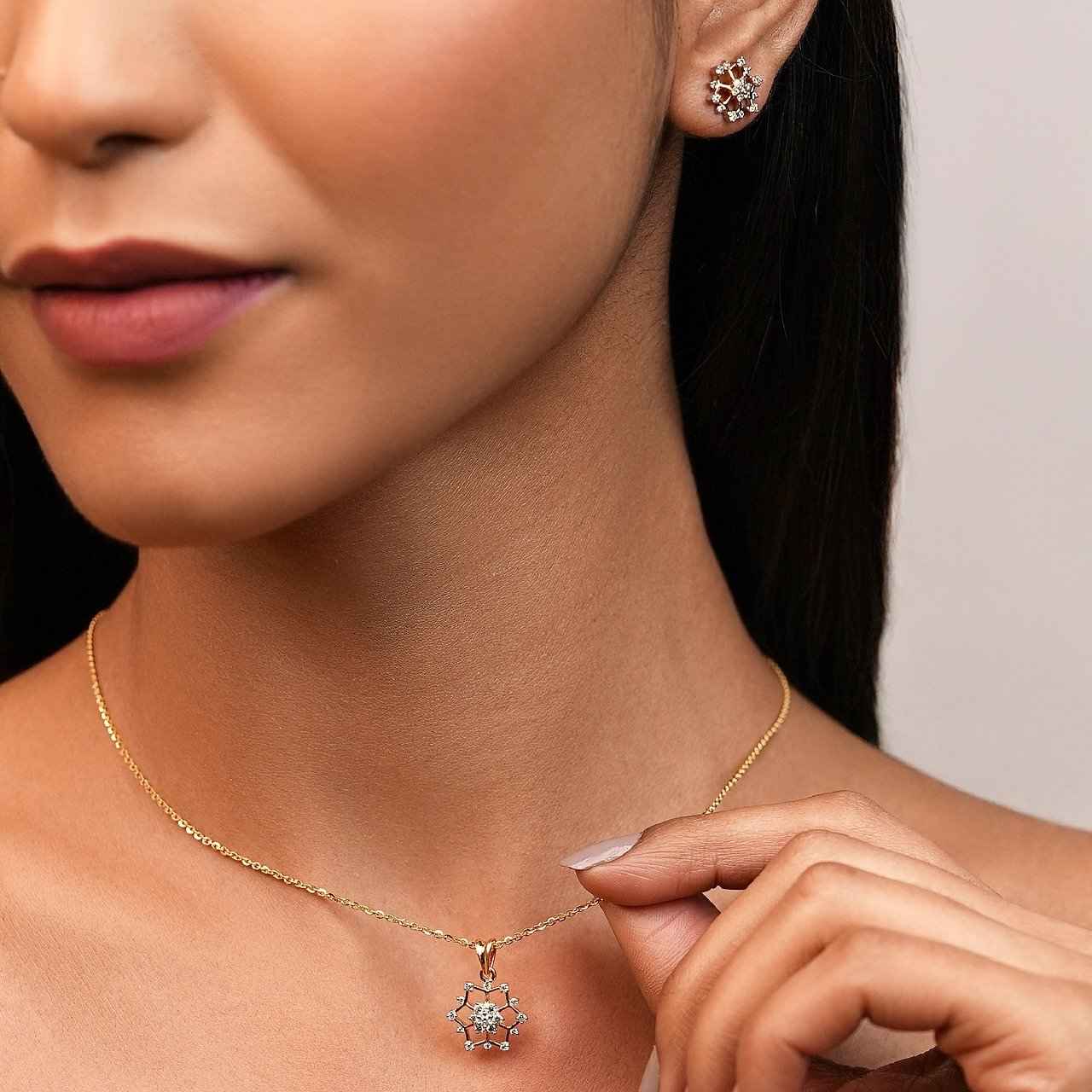
Cons of Investing in Jewelry
Investing in jewelry can seem alluring due to its potential for value appreciation and emotional significance. However, it is essential to understand that there are notable risks and drawbacks associated with this type of investment that potential investors should carefully consider.
While jewelry can be a beautiful and valuable asset, the market is fraught with challenges that can impact your investment. Here are some key factors to keep in mind:
The jewelry market is notoriously unpredictable. Prices can fluctuate due to various factors such as trends, demand, and economic conditions. For instance, a piece that is highly sought after today may not hold the same value in the future. Investors must be prepared for the possibility of significant value drops based on market shifts.
Buying and selling jewelry often comes with high transaction costs. These can include appraisal fees, insurance, and commissions, which can substantially reduce your overall profitability. For example, a piece purchased for $10,000 might incur up to 15% in transaction fees when sold, leading to a net loss for the investor.
Unlike stocks or bonds, jewelry is considered a less liquid asset. Selling jewelry can take time, and finding the right buyer may not be straightforward. This lack of liquidity can be particularly inconvenient for investors who may need quick access to cash for personal or business reasons.
Another risk involves the authenticity of the jewelry. Counterfeit pieces or misrepresented items can lead to significant financial losses. Investors should conduct thorough research and seek reputable appraisers to validate the authenticity of their purchases. Without proper verification, the value of an investment can be severely compromised.
While the emotional and aesthetic value of jewelry can be a positive aspect, it can also pose a risk. Investors may find it difficult to part with pieces that hold sentimental value, leading to poor investment decisions. Emotional attachment can cloud judgment, making it challenging to assess the true market value of an item.
Jewelry trends can change rapidly, which can affect the resale value of certain pieces. Investing in items that are currently in vogue may lead to disappointment if those trends fade. It is crucial for investors to focus on timeless pieces that are likely to retain value over time rather than fleeting fashion statements.
Investing in jewelry can be a rewarding venture, but it is not without its challenges. By understanding the risks and drawbacks, potential investors can make informed decisions that align with their financial goals. It is advisable to conduct thorough research, seek expert advice, and approach jewelry investment with caution to maximize potential returns while minimizing risks.
Market Volatility
The jewelry market is known for its unpredictability, with prices often fluctuating due to various factors including current trends, consumer demand, and broader economic conditions. This volatility can significantly impact investment returns, making it crucial for potential investors to understand the underlying dynamics.
Several key factors contribute to the price fluctuations in the jewelry market:
- Trends and Fashion: Jewelry styles are heavily influenced by fashion trends, celebrity endorsements, and cultural shifts. A piece that is in vogue today may lose its appeal tomorrow, directly affecting its market value.
- Supply and Demand: The availability of certain gemstones and materials can cause significant price changes. For instance, if a rare gemstone is discovered, it can flood the market, decreasing the value of existing pieces.
- Economic Conditions: Economic downturns often lead to decreased consumer spending, which can lower demand for luxury items like jewelry. Conversely, in a thriving economy, demand may surge, driving prices up.
Investors looking to enter the jewelry market should adopt strategies to mitigate risks associated with volatility:
- Diversification: Just like any other investment, diversifying your jewelry portfolio can help spread risk. Consider investing in a range of pieces, including vintage items, contemporary designs, and various types of gemstones.
- Research and Education: Staying informed about market trends and understanding the factors affecting jewelry prices can empower investors to make educated decisions. This includes following market reports, attending jewelry shows, and engaging with experts.
- Long-Term Perspective: Jewelry should be viewed as a long-term investment. While short-term price fluctuations can be concerning, many pieces appreciate over time, especially those that are unique or hold historical significance.
While jewelry can be a rewarding investment, it also comes with inherent risks:
- High Transaction Costs: Selling jewelry often incurs significant costs, such as appraisal fees and auction house commissions, which can eat into profits.
- Lack of Liquidity: Unlike stocks or bonds, selling jewelry can take time. Investors may find it challenging to sell quickly, especially in a fluctuating market.
- Emotional Attachment: Jewelry often carries sentimental value, which can cloud judgment when it comes to selling or valuing a piece.
Understanding the volatility of the jewelry market is essential for anyone considering investing in this sector. By being aware of the factors that influence prices and adopting sound investment strategies, investors can navigate the complexities of the jewelry market more effectively.
High Transaction Costs
When it comes to investing in jewelry, one must consider various factors, including the associated with buying and selling these precious items. Understanding these costs is crucial for anyone looking to maximize their investment returns.
Investing in jewelry can be a rewarding experience, but it often comes with significant transaction fees that can diminish overall profitability. These costs can be categorized into several key areas:
- Appraisals: Before selling a piece of jewelry, it is typically necessary to have it appraised. This process can cost anywhere from $50 to several hundred dollars, depending on the piece’s complexity and value.
- Insurance: Protecting your jewelry investment is essential, but insurance premiums can add up. Depending on the value of your collection, annual premiums may range from 1% to 3% of the total value.
- Commissions: When selling jewelry through a dealer or auction house, sellers often incur commission fees, which can be as high as 20% to 30% of the selling price. This can significantly cut into potential profits.
The impact of these high transaction costs cannot be overstated. For example, if you purchase a piece of jewelry for $10,000 and later decide to sell it, you might face:
- An appraisal fee of $200
- Insurance costs of $300 per year
- A commission of 25% when selling, which amounts to $2,500
In this scenario, your initial investment of $10,000 could shrink to just $7,200 after accounting for these costs, illustrating how transaction fees can significantly affect profitability.
While high transaction costs are a reality in the jewelry market, there are strategies investors can employ to minimize these expenses:
- Buy Wisely: Invest in pieces that are likely to appreciate in value, thereby offsetting some of your costs when you sell.
- Negotiate Fees: When dealing with appraisers or auction houses, don’t hesitate to negotiate fees. Many are willing to work with you to secure your business.
- Consider Direct Sales: Selling directly to buyers through platforms like social media or specialized online marketplaces can help you avoid hefty commissions.
Investing in jewelry is not just about the initial purchase; it’s also about how transaction costs will affect your overall investment strategy. By being aware of these costs and implementing strategies to mitigate them, you can enhance your investment’s profitability.
In conclusion, while the allure of jewelry as an investment is undeniable, potential investors must approach it with a clear understanding of the involved. By carefully considering these factors, you can make more informed decisions that align with your financial goals.
Lack of Liquidity
Investing in jewelry can be a captivating venture, but it is essential to understand the liquidity challenges associated with it. Unlike stocks or bonds, which can typically be sold quickly on the market, jewelry often requires a more extended period to find a buyer. This can create a significant hurdle for investors who may need immediate access to cash.
The term liquidity refers to how easily an asset can be converted into cash without affecting its market price. In the context of jewelry, this means that while you may own a valuable piece, turning that asset into cash can be a time-consuming process. Factors such as market demand, the uniqueness of the piece, and its condition can all influence how quickly a sale can be completed.
- Market Demand: Jewelry is often subject to trends and fashions that can change rapidly. A piece that is highly sought after today may not hold the same appeal tomorrow.
- Buyer Education: Potential buyers may lack the knowledge to accurately assess the value of jewelry, leading to longer negotiation periods or reluctance to purchase.
- Specialization: Unlike stocks, which are traded on exchanges, jewelry sales often occur through specialized channels, such as auctions or private sales, which can take time to arrange.
To mitigate the risks associated with the in jewelry investments, consider the following strategies:
- Choose High-Demand Pieces: Invest in jewelry that has a proven track record of appreciation and demand. Pieces from renowned designers or those with unique historical significance are often easier to sell.
- Build Relationships with Reputable Dealers: Establish connections with reputable jewelers or auction houses. They can provide valuable insights and may assist in facilitating quicker sales.
- Consider Alternative Selling Platforms: Explore online marketplaces that specialize in jewelry sales. These platforms can broaden your reach and potentially expedite the selling process.
When investors are in a position where they need to sell jewelry quickly, they may face the unfortunate reality of having to accept lower offers. Urgency can lead to hasty decisions, resulting in less favorable financial outcomes. Understanding the market value and being patient can help in securing a better price.
While investing in jewelry can be rewarding, the remains a significant consideration. Investors should weigh the benefits against the challenges of selling jewelry quickly, ensuring they have strategies in place to manage their investments effectively. By being informed and prepared, jewelry investors can navigate the complexities of this unique asset class.
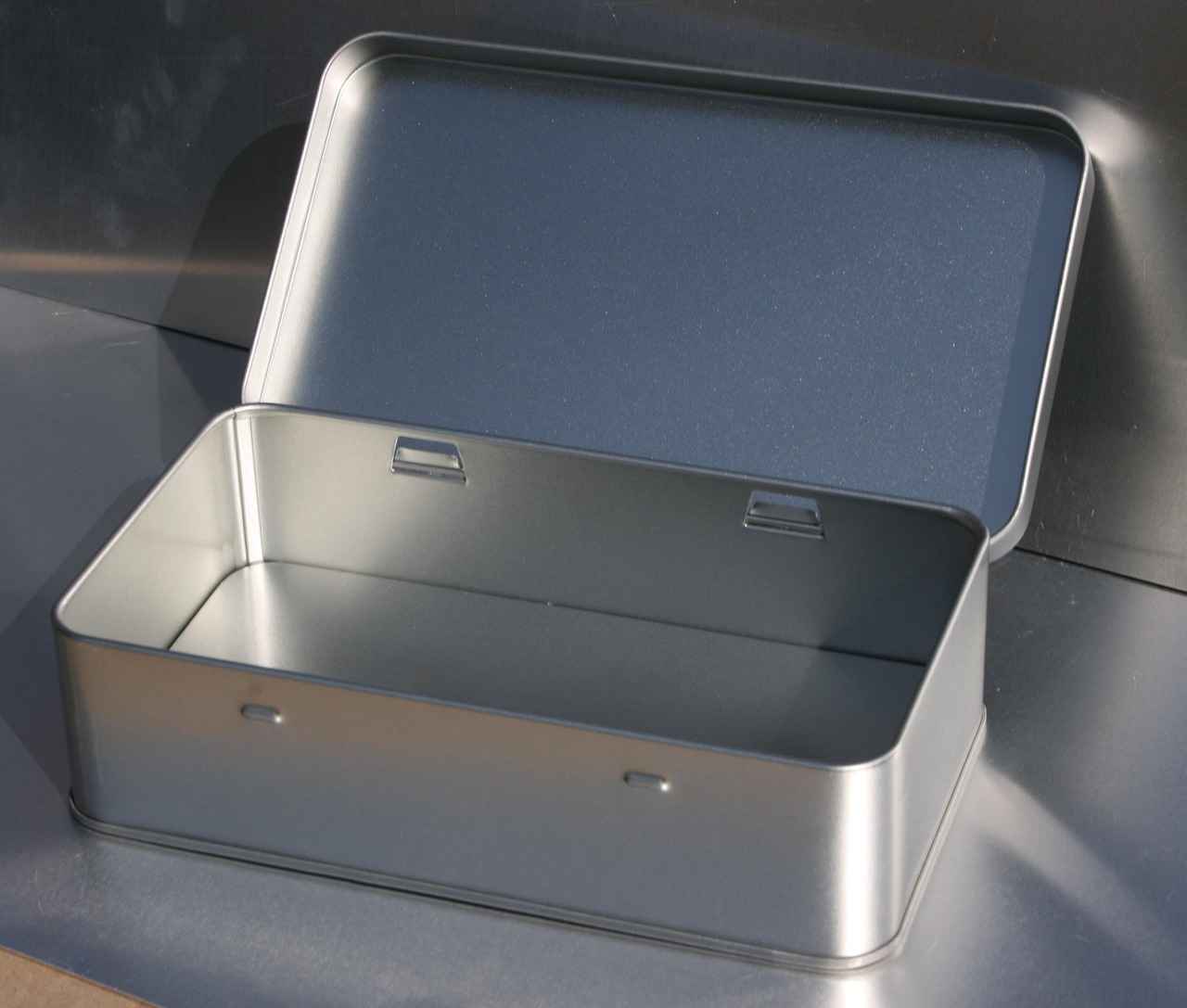
How to Choose the Right Jewelry for Investment?
When considering how to choose the right jewelry for investment, several critical factors come into play. Selecting pieces that not only resonate with your personal taste but also hold potential for value appreciation requires a strategic approach. Understanding the nuances of quality, rarity, and market trends is essential for making wise purchases.
Quality is paramount when investing in jewelry. The Four Cs—cut, color, clarity, and carat weight—serve as the foundational criteria for evaluating gemstones. Each factor contributes to the overall beauty and desirability of a piece:
- Cut: A well-cut gemstone reflects light beautifully, enhancing its visual appeal.
- Color: The hue of a gemstone can significantly affect its value, with rare colors often commanding higher prices.
- Clarity: Fewer inclusions or blemishes typically lead to greater value.
- Carat Weight: Larger stones are generally more valuable, though quality is equally important.
Rarity is another critical element that can influence the investment potential of jewelry. Pieces featuring rare gemstones or unique designs tend to appreciate more over time. For instance, gemstones like Alexandrite or Paraiba Tourmaline are not only stunning but also scarce, making them attractive to collectors and investors alike.
Understanding current market trends is essential for making informed investment decisions. Jewelry trends can shift based on fashion, economic conditions, and cultural influences. Keeping an eye on auction results, sales data, and industry reports can provide valuable insights into which pieces are gaining popularity and which may be declining in value.
Investing in pieces from renowned designers or vintage collections can further enhance value. Items from well-known brands like Tiffany & Co. or Cartier often retain or appreciate in value due to their established reputations and historical significance. Additionally, vintage pieces may come with unique stories and craftsmanship that appeal to collectors.
Before making a purchase, it is crucial to verify the authenticity of the jewelry. This can include obtaining certificates of authenticity for gemstones and ensuring that the piece comes from a reputable source. Investing in jewelry from established jewelers or auction houses can provide assurance of quality and authenticity, which is vital for preserving value.
- Always conduct thorough research on the piece and its history.
- Consider the long-term potential of the jewelry rather than just its immediate aesthetic appeal.
- Consult with experts or appraisers to gain insights into the piece’s value.
In conclusion, choosing the right jewelry for investment involves a blend of understanding quality, recognizing rarity, and staying informed about market trends. By taking these factors into account, you can make more informed decisions that not only enhance your personal collection but also serve as a sound investment strategy.
Understanding Gemstone Quality
When it comes to investing in jewelry, understanding the quality of gemstones is crucial. One of the most effective ways to evaluate gemstones is by familiarizing yourself with the Four Cs: cut, color, clarity, and carat weight. These factors not only determine the aesthetic appeal of a gemstone but also significantly influence its value in the market.
The cut of a gemstone refers to how well it has been shaped and faceted. A well-cut gemstone will reflect light beautifully, enhancing its brilliance and fire. The cut is often considered the most critical of the Four Cs because it directly affects the stone’s overall appearance. Poorly cut stones can appear dull, regardless of their other qualities. Understanding the different types of cuts, such as round, princess, and emerald, can help you appreciate their unique characteristics and value.
Color is another essential factor in determining a gemstone’s quality. The most valuable gemstones exhibit a vibrant, rich color that is free from any brown or gray undertones. For instance, in sapphires, the most sought-after shade is a vivid royal blue. Additionally, the saturation and tone of the color can also affect the stone’s value. Familiarizing yourself with the nuances of gemstone color can significantly enhance your purchasing decisions.
Clarity refers to the presence of inclusions or blemishes within a gemstone. A stone with fewer inclusions is generally more valuable. However, some inclusions can add character to the gemstone, particularly in natural stones. Gemstones are graded on a scale from “Included” to “Flawless,” and understanding this scale can help you assess the quality of a gemstone effectively.
Carat weight measures a gemstone’s size and weight, with one carat equaling 200 milligrams. Generally, larger gemstones are rarer and therefore more valuable. However, carat weight should not be the sole consideration; a smaller gemstone with exceptional cut, color, and clarity can be more valuable than a larger, lesser-quality stone. Understanding the balance between carat weight and the other Cs is essential for making informed investment decisions.
- Always seek gemstones with a high-quality cut, as this enhances their overall appearance.
- Pay attention to color saturation and tone; vibrant colors are typically more desirable.
- Consider clarity carefully; fewer inclusions generally mean higher value.
- Balance carat weight with the other Cs; a smaller, high-quality stone can be a better investment.
In conclusion, understanding the Four Cs—cut, color, clarity, and carat weight—is essential for anyone looking to invest in gemstones. By familiarizing yourself with these criteria, you can make informed decisions that enhance both your appreciation of jewelry and your investment potential. Remember, investing in gemstones is not just about financial gain; it’s also about appreciating their beauty and craftsmanship.
Researching Designer and Vintage Pieces
When it comes to investing in jewelry, is a crucial step that can significantly influence your investment’s potential return. These items not only possess aesthetic appeal but also carry a rich history that often enhances their value over time.
Investing in pieces from renowned designers or vintage collections can enhance value, as these items often hold historical significance and attract collector demand. The allure of designer jewelry lies in its brand recognition and craftsmanship, while vintage pieces often tell a story that resonates with buyers.
Designer jewelry is typically associated with high-quality materials and exceptional craftsmanship. Brands like Cartier, Tiffany & Co., and Van Cleef & Arpels have established a reputation that can significantly influence resale value. The rarity of certain collections can also drive demand, making them a smart investment choice.
Vintage jewelry holds a unique charm that often stems from its craftsmanship and the era it represents. Collectors are often drawn to pieces that reflect specific styles, such as Art Deco or Victorian, which can make them highly sought after. The patina and imperfections of vintage items can also add character, increasing their desirability.
- Authenticity: Always ensure that the piece is authentic. Look for certificates of authenticity or purchase from reputable dealers.
- Condition: The condition of the jewelry plays a significant role in its value. Pieces that have been well-maintained or restored can fetch higher prices.
- Market Trends: Stay informed about current market trends. Certain styles may become popular, influencing the demand for specific types of jewelry.
Finding the right pieces requires diligence and research. Here are some recommended avenues:
- Reputable Auction Houses: These venues often feature high-quality designer and vintage pieces, with transparent bidding processes.
- Specialty Boutiques: Many cities have boutiques that specialize in vintage and designer jewelry, offering a curated selection.
- Online Platforms: Websites like 1stDibs and Chrono24 provide access to a global marketplace, but always verify seller credentials.
While investing in designer and vintage jewelry can be rewarding, it is essential to consider the risks involved. The market can be unpredictable, and the resale value may not always meet expectations. Additionally, the condition and authenticity of the piece can significantly impact its value.
Investing in designer and vintage jewelry can be a fulfilling endeavor, both financially and emotionally. By conducting thorough research and understanding the nuances of the market, you can make informed decisions that enhance your investment portfolio. Remember, the key to successful jewelry investment lies in recognizing the unique qualities that make each piece valuable.
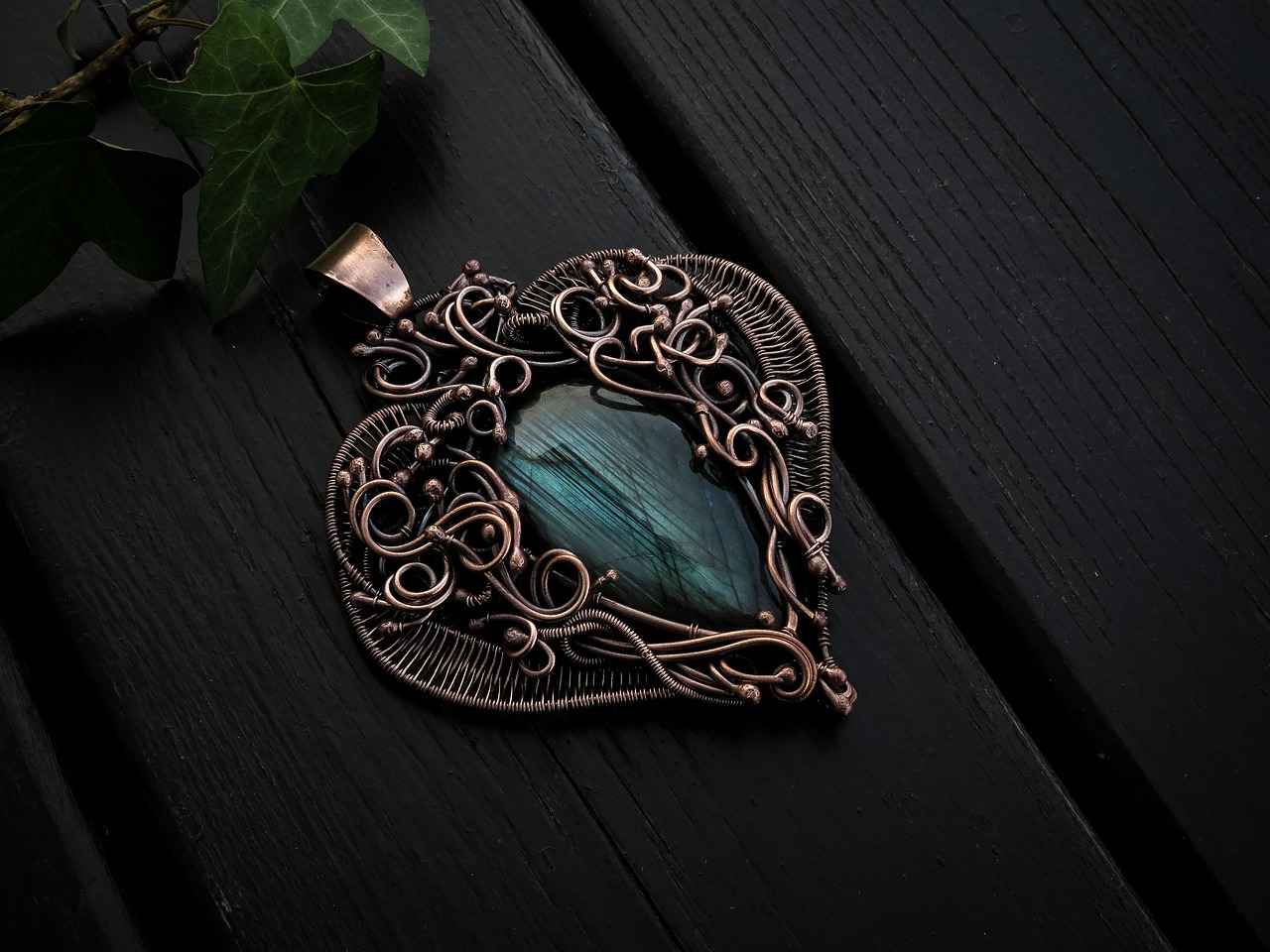
Where to Buy Investment-Worthy Jewelry?
When it comes to investing in jewelry, finding reputable sources for purchasing investment-grade pieces is crucial. This ensures not only the authenticity of the jewelry but also its potential for value retention over time. With the jewelry market being vast and varied, knowing where to buy can significantly influence your investment success.
Investing in jewelry involves significant financial commitment, making it essential to choose sources that guarantee quality and authenticity. Reputable sources often provide certificates of authenticity and detailed information about the jewelry’s history, craftsmanship, and materials. This transparency is vital for investors aiming to secure their investments.
- Established Jewelers: Purchasing from well-known and reputable jewelers can offer peace of mind. These retailers typically have a longstanding reputation for quality and customer service.
- Auction Houses: Renowned auction houses often feature exclusive pieces with verified provenance. They provide a platform for buying high-value jewelry that may appreciate over time.
- Online Marketplaces: While many online platforms offer convenience, it’s crucial to verify the seller’s credibility. Look for platforms that provide buyer protection and detailed seller ratings.
Before making a purchase, it’s essential to conduct thorough research on the seller. Here are some key steps to ensure you are dealing with a reputable source:
- Check Reviews: Look for customer reviews and testimonials to gauge the seller’s reputation.
- Request Documentation: Always ask for certificates of authenticity and appraisals from recognized gemological laboratories.
- Evaluate Return Policies: A reputable seller should have a clear return policy that protects your investment.
While online shopping for jewelry can be convenient, it comes with its own set of risks. Potential buyers should be aware of:
- Scams and Fraud: Be cautious of deals that seem too good to be true, as they often are.
- Lack of Physical Inspection: Unlike traditional stores, online purchases may not allow you to inspect the jewelry in person before buying.
- Shipping Risks: Ensure that the seller uses secure shipping methods and provides tracking information for your purchase.
Investing in vintage or antique jewelry can be particularly rewarding. These pieces often come with a rich history and unique craftsmanship. When purchasing vintage items, consider:
- Provenance: Understanding the history of the piece can enhance its value.
- Condition: Ensure the item is in good condition, as restoration may affect its value.
- Market Trends: Stay informed about current trends in vintage jewelry to make educated purchasing decisions.
Diversifying your jewelry investment portfolio can mitigate risks and enhance potential returns. Consider investing in:
- Different Types of Jewelry: Include a mix of rings, necklaces, and bracelets.
- Varied Materials: Invest in pieces made from different metals and gemstones to balance your portfolio.
- Designer and Non-Designer Pieces: While designer pieces can be more expensive, non-designer items may offer unique value opportunities.
In conclusion, finding reputable sources for investment-grade jewelry is essential for ensuring authenticity and value retention. By carefully selecting where to purchase, conducting thorough research, and diversifying your portfolio, you can make informed decisions that enhance your jewelry investment journey.
Reputable Jewelers and Auction Houses
When investing in jewelry, the source from which you purchase your pieces is of utmost importance. Opting for reputable jewelers and auction houses can provide a significant level of assurance regarding the quality and authenticity of your investment. This is especially vital for those looking to make jewelry a part of their financial portfolio, as the right purchase can yield substantial returns over time.
Established jewelers often have a long-standing reputation for quality and service. They typically adhere to strict standards and provide certificates of authenticity for their pieces. This documentation not only verifies the quality of the materials used but also serves as a safeguard against potential fraud. When you buy from a reputable jeweler, you are more likely to acquire pieces that hold their value over time.
Auction houses can be a treasure trove for investors seeking unique and rare pieces. They often feature items that are not available in traditional retail settings. Furthermore, auction houses provide a transparent bidding process, allowing you to gauge the market demand for specific jewelry items. This can be particularly beneficial when considering the potential for appreciation in value.
- Expert Appraisals: Reputable jewelers and auction houses employ certified gemologists who can accurately assess the quality of gemstones and metals.
- Provenance: Items sold through established auction houses often come with a documented history, which can enhance their value.
- Return Policies: Many reputable sellers offer return policies, giving buyers peace of mind in case the item does not meet expectations.
Understanding market trends is crucial when investing in jewelry. Established jewelers and auction houses often have insights into what styles and materials are gaining popularity. For example, certain vintage pieces may see a resurgence in demand, leading to increased value. By purchasing from reputable sources, investors can stay informed about these trends, which can significantly impact their investment decisions.
While the jewelry market can be lucrative, it is essential to conduct thorough research before making a purchase. Look for reviews and ratings of jewelers and auction houses. Consider seeking recommendations from trusted friends or family members who have experience in jewelry investment. This due diligence can help you avoid potential scams and ensure that you are making a sound investment.
Investing in jewelry can be a rewarding endeavor, but it requires a careful approach. By purchasing from reputable jewelers and auction houses, you can enhance your chances of acquiring high-quality pieces that will retain or increase in value over time. Remember to prioritize authenticity and quality, as these factors will ultimately determine the success of your investment.
Online Marketplaces and Platforms
In today’s digital age, online marketplaces and platforms have revolutionized the way we buy and sell jewelry. While the convenience of shopping from the comfort of your home is appealing, it comes with its own set of challenges, particularly when it comes to ensuring the credibility of sellers and the authenticity of products. Understanding how to navigate these platforms effectively can make a significant difference in your investment journey.
When purchasing jewelry online, verifying the credibility of sellers is crucial. Many platforms host a wide range of sellers, from established jewelers to individual sellers. Here are some key points to consider:
- Reputation: Check seller ratings and reviews. A seller with a long history of positive feedback is generally more trustworthy.
- Return Policies: Reputable sellers often have clear return policies, which can protect your investment.
- Customer Service: Good customer service can indicate a seller’s commitment to their customers and product quality.
Ensuring that the jewelry you are purchasing is authentic is essential to avoid potential scams. Here are some strategies:
- Certification: Look for jewelry that comes with certification from recognized gemological laboratories. This documentation verifies the quality and authenticity of gemstones.
- Detailed Descriptions: Trustworthy sellers provide comprehensive descriptions of their products, including materials, dimensions, and any unique characteristics.
- High-Quality Images: Examine photographs carefully. Authentic sellers usually provide multiple high-resolution images from different angles.
Despite the advantages, there are inherent risks when buying jewelry online:
- Scams: The anonymity of online transactions can lead to fraudulent listings. Always conduct thorough research before making a purchase.
- Quality Discrepancies: The product received may not match the online description, leading to disappointment.
- Shipping Issues: Jewelry can be fragile, and improper handling during shipping can result in damage.
To mitigate risks and enhance your online shopping experience, consider the following tips:
- Use Secure Payment Methods: Opt for payment options that offer buyer protection, such as credit cards or trusted payment services.
- Research the Platform: Familiarize yourself with the online marketplace. Platforms with buyer protection policies can provide additional security.
- Ask Questions: Don’t hesitate to reach out to sellers for more information. A responsive seller is often a good sign of reliability.
In conclusion, while online platforms provide unparalleled convenience for purchasing jewelry, it is vital to exercise caution. By thoroughly verifying seller credibility and product authenticity, you can significantly reduce the risk of falling victim to scams. With the right approach, online jewelry shopping can be a rewarding experience that contributes positively to your investment portfolio.

How to Maintain and Insure Your Jewelry Investment?
Investing in jewelry can be a rewarding experience, but it comes with responsibilities that are essential for safeguarding your investment. Proper maintenance and insurance are crucial elements that not only preserve the aesthetic appeal of your jewelry but also protect its financial value. This section delves into the best practices for maintaining your jewelry and the importance of insuring it against potential risks.
Regular maintenance plays a vital role in ensuring that your jewelry remains in excellent condition. Here are some key aspects to consider:
- Routine Cleaning: Dirt and oils from daily wear can dull the shine of your jewelry. Cleaning your pieces regularly helps to maintain their brilliance. Use a soft cloth and mild soap solution for routine cleaning.
- Professional Inspections: Taking your jewelry to a professional jeweler for periodic inspections can help identify any potential issues, such as loose stones or weakened settings. This proactive approach can prevent costly repairs down the line.
- Storage Practices: Proper storage is essential for avoiding scratches and tangles. Use individual pouches or a dedicated jewelry box to keep your pieces safe and organized.
Insuring your jewelry is not just a precaution; it’s a necessity for anyone serious about their investment. Here’s why:
- Protection Against Theft: Jewelry is often a target for theft. Having insurance ensures that you can recover your financial loss if your pieces are stolen.
- Coverage for Damage: Accidents happen. Whether it’s a broken clasp or a chipped gemstone, insurance can cover repair costs, helping you maintain the value of your investment.
- Peace of Mind: Knowing that your jewelry is insured allows you to wear and enjoy your pieces without constant worry about potential loss or damage.
When insuring your jewelry, it’s important to choose the right type of coverage:
- Scheduled Personal Property Insurance: This type of policy allows you to specifically list your jewelry items, ensuring they are covered for their full appraised value.
- Homeowners or Renters Insurance: Some homeowners or renters insurance policies offer limited coverage for jewelry, but it may not cover the full value. Always check the specifics of your policy.
- Jewelry-Specific Insurance: These policies are designed specifically for jewelry and often provide comprehensive coverage, including loss, theft, and damage.
Before insuring your jewelry, you need to understand its value. Here are steps to follow:
- Get a Professional Appraisal: A certified appraiser can provide an accurate valuation based on the quality, materials, and market demand for your jewelry.
- Keep Documentation: Maintain records of your purchase receipts, appraisals, and any maintenance work done. This documentation will be essential when filing a claim.
- Review Your Coverage Regularly: As the market value of your jewelry can change, it’s wise to review your insurance coverage periodically to ensure it reflects the current value.
In summary, maintaining and insuring your jewelry investment is not just about protection; it’s about ensuring that your pieces retain their beauty and value over time. By following these guidelines, you can enjoy your jewelry with confidence, knowing that you are well-prepared for any unforeseen circumstances.
Regular Cleaning and Maintenance
of your jewelry is crucial for preserving its beauty and longevity. Neglecting these essential tasks can lead to tarnishing, dullness, and even damage to the materials. Here, we will explore the importance of routine care and professional maintenance for your jewelry investment.
Jewelry is often exposed to various elements, including sweat, lotions, and environmental pollutants. These factors can accumulate and tarnish your pieces over time. Regular cleaning helps remove these residues, ensuring that your jewelry maintains its shine and brilliance.
- Daily Wear Items: For pieces you wear every day, such as rings and bracelets, a quick clean every few weeks is advisable.
- Occasional Wear: Items worn less frequently should be cleaned every few months to prevent buildup.
- Professional Cleaning: Consider having your jewelry professionally cleaned at least once a year to maintain its condition.
There are several methods for cleaning jewelry, each suitable for different materials:
- Soap and Water: A gentle solution of warm water and mild soap can effectively clean most metals and gemstones.
- Ultrasonic Cleaners: These devices use high-frequency sound waves to remove dirt and grime from jewelry, but should be used with caution on delicate pieces.
- Professional Services: For intricate or valuable items, professional cleaning services are recommended to avoid damage.
Engaging a professional for maintenance offers several benefits:
- Expert Inspection: Professionals can identify potential issues, such as loose stones or wear and tear, before they become significant problems.
- Restoration Services: Professional jewelers can restore pieces to their original condition, enhancing both aesthetic appeal and market value.
- Insurance Documentation: Having your jewelry appraised and documented during maintenance can be beneficial for insurance purposes.
In addition to regular cleaning and professional maintenance, consider the following tips to protect your jewelry:
- Store Properly: Keep your jewelry in a cool, dry place, ideally in a lined box or pouch to prevent scratches and tangling.
- Avoid Exposure: Remove jewelry before engaging in activities that may cause damage, such as exercising or swimming.
- Insurance: Insuring your jewelry can provide peace of mind and financial protection against theft or damage.
In summary, routine cleaning and professional maintenance are essential practices for anyone looking to preserve the aesthetic and market value of their jewelry. By understanding the importance of these tasks and implementing regular care, you can ensure that your jewelry remains a cherished investment for years to come.
Importance of Insurance
When it comes to investing in jewelry, one of the most critical aspects to consider is the . Insuring your jewelry is not just a precaution; it is a vital step in protecting your valuable assets from unforeseen circumstances. This article delves into why insurance is essential for jewelry investment and how it can safeguard your financial interests.
Jewelry can represent significant financial investments, often comprising precious metals and rare gemstones. By insuring your jewelry, you ensure that you can recover your financial loss in unfortunate circumstances like theft, damage, or loss. Here are some key reasons why insuring your jewelry is crucial:
- Protection Against Theft: Jewelry is often a target for theft, whether at home or while traveling. Insurance provides peace of mind, knowing that you can recover your losses if your jewelry is stolen.
- Coverage for Damage: Accidents happen, and jewelry can be damaged due to various reasons, such as accidental drops or exposure to harsh chemicals. Insurance helps cover repair costs, ensuring your investment remains intact.
- Financial Recovery: In the event of a loss, insurance allows you to replace your jewelry without bearing the full financial burden. This is especially important for high-value items.
Understanding what your jewelry insurance covers is essential. Most policies typically include:
- Theft and Loss: Coverage for theft or loss of the item, whether it occurs at home, in transit, or in public places.
- Accidental Damage: Protection against accidental damage, such as broken clasps or chipped stones, ensuring that you can repair your jewelry without incurring high out-of-pocket expenses.
- Natural Disasters: Coverage for losses resulting from natural disasters like floods, fires, or earthquakes, which can be devastating.
To ensure that your jewelry is adequately protected, consider the following steps:
- Get an Appraisal: Before purchasing insurance, have your jewelry appraised by a certified gemologist. An accurate appraisal will help determine the item’s value and ensure you have the right coverage.
- Choose the Right Policy: Research various insurance providers and policies. Look for comprehensive coverage that suits your needs and budget.
- Keep Documentation: Maintain records of your jewelry’s appraisal, purchase receipts, and photographs. This documentation will be invaluable in the event of a claim.
If you find yourself needing to file a claim, follow these steps:
- Contact Your Insurer: Reach out to your insurance provider as soon as possible to report the loss or damage.
- Provide Documentation: Submit the necessary documentation, including your appraisal, receipts, and any photographs of the jewelry.
- Follow Up: Stay in contact with your insurer throughout the claims process to ensure everything is processed smoothly.
In conclusion, insuring your jewelry investment is an essential step in safeguarding against theft or damage. By understanding the importance of insurance and taking proactive measures, you can protect your valuable assets and ensure financial recovery in unfortunate situations.
Frequently Asked Questions
- Is investing in jewelry a safe option?
Investing in jewelry can be rewarding, but it comes with risks. The market can be volatile, and prices may fluctuate based on trends and demand. It’s essential to do thorough research before diving in.
- What should I look for when buying investment-grade jewelry?
Focus on quality, rarity, and the reputation of the designer. Understanding the Four Cs of gemstones—cut, color, clarity, and carat weight—can help you make informed decisions.
- How do I maintain the value of my jewelry investment?
Regular cleaning and professional maintenance are key to preserving your jewelry’s aesthetic and market value. Additionally, insuring your pieces protects against loss or damage.
- Are there high transaction costs associated with buying and selling jewelry?
Yes, buying and selling jewelry often involves significant transaction fees, including appraisals, insurance, and commissions, which can impact your overall profitability.
- Where can I find reputable jewelry for investment?
Consider purchasing from established jewelers and auction houses known for their authenticity. Online marketplaces can be convenient but require careful vetting of sellers.

